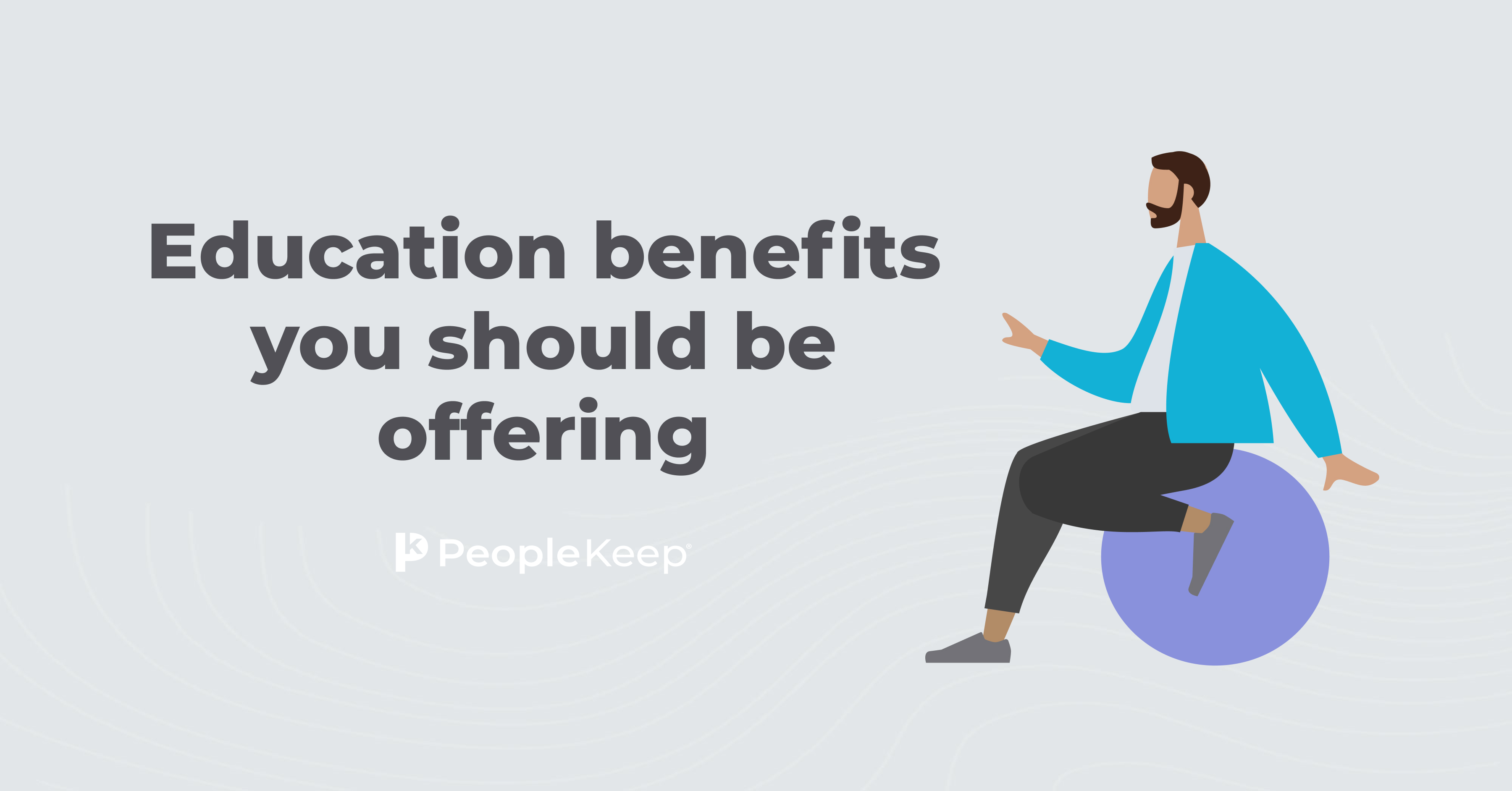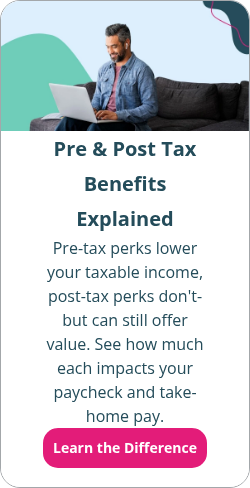How to start an employer-sponsored student loan repayment program
By Elizabeth Walker on September 11, 2023 at 9:56 AM
With the number of job openings at 8.8 million1, many U.S. employers are looking for ways to get an edge over their competitors when it comes to attracting job candidates. Many organizations are exploring unique employee benefits programs and increasing compensation packages to attract and retain top talent.
Offering student loan repayment assistance is one way you can attract job seekers. 45 million Americans are burdened by student loan debt2, and recent federal laws have increased tax breaks for employers that want to establish student loan repayment programs.
This article will explain how to start a student loan repayment program and ensure its success.
Can an employer repay student loans?
Employers have always been able to help employees repay student loans on a taxable basis, through methods like giving a bonus. However, the Consolidated Appropriations Act of 2020 expanded IRS code Section 1273 to allow employers to repay employees’ student loans up to a specific dollar amount tax-free through 2025.
Organizations can pay up to $5,250 annually—tax-free—toward an employee’s student loans and tuition. If you offer more than that amount, the additional allowance is taxable income, and you must report it on employees' W-2s.
The $5,250 tax-free limit is for all qualifying education assistance benefits combined, not just student loan repayment. So, if you offer other education assistance benefits, you’ll need to account for that.
While employer student loan repayment programs are uncommon, they have seen an increase in popularity. According to the Society for Human Resource Management (SHRM)4, the percentage of employers providing student loan repayment assistance doubled from 4% to 8% in 2020.
Why offer student loan repayment benefits?
Student loan repayment is a significant concern among college students and graduates. According to the Education Data Initiative5, the average federal student loan debt in the U.S. is $37,717.
A common reason for offering a repayment plan is to attract younger workers, such as Millennials and Gen Zers, as they’re most likely to have student debt. Millennials comprise the largest percentage of federal loan borrowers, with Gen Z coming in second6.
These younger workers, especially Gen Z, don't value the same employee benefits as other generations. For example, their outstanding student loan debt may make them less likely to utilize a 401(k) benefit. In this case, it may make more sense to prioritize offering a loan repayment program for these workers.
According to our 2022 Employee Benefits Survey Report, 26% of Gen Z employees surveyed rated student loan repayment assistance programs as "very" or "extremely" important, while 27% of Millennials rated the benefit the same. Offering student loan assistance can help you attract these younger employees. It can also help you retain your existing Millennial and Gen Z workforce, helping you save money on employee acquisition.
Offering a loan repayment benefit may also enable employees to spend less time stressing about student loan debt and more time being an engaged member of your workforce. According to PwC's 2023 Employee Financial Wellness Survey7, 63% of full-time employees experience stress regarding their finances. Helping to ease employees' financial worries will allow them to focus on their work.
Student loan repayment vs. tuition assistance
While student loan repayment assistance is a new employee benefit, other education benefits like tuition assistance have been around for decades.
Tuition assistance is an employer-provided benefit that pays or reimburses employees for their current education expenses. These expenses can include college tuition, textbooks, supplies, and equipment. Only employees who are currently enrolled in classes or programs qualify for this type of benefit.
Meanwhile, employer student loan repayment benefits help your current employees with their existing student loan debt.
Which student loans qualify for repayment?
Not all loans qualify for tax-free repayment under IRS guidelines. You can only repay eligible loans on a tax-free basis. To qualify, the loan must meet specific requirements8 listed in IRS Publication 970.
To qualify for tax-free repayment, student loans must be:
- Taken for the employee, their spouse, or a dependent
- Paid or incurred within a reasonable time period
- For education provided during a standard academic year for a student enrolled at least half-time in a program that leads to a degree or certificate
The loan also can't be from a relative or a qualified employer plan.
How to offer student loan repayments to your employees
Every student loan repayment program is unique. While these programs will look different in every organization, here are a few tips to ensure your program is successful.
1. Determine your monthly or annual allowance for student loan repayments
First, you'll need to determine how much you're willing to spend on employee student loan assistance. While the IRS allows you to provide up to $5,250 tax-free per employee annually, you don't have to offer that amount to see the program's benefits.
The average federal student loan payment is $503 a month, or $6,036 each year9. Repaying a significant portion of these monthly payments is enough to impact your employees positively.
You can start by offering a $100 or $200 monthly payment and increase the amount as you can. You could also offer different payments to different groups of employees. For instance, you can offer a lower payment amount to first-year employees than you would to those who have been with your organization for a few years. This incentivizes employees to stay at your organization, reducing employee turnover and saving you on acquisition costs for new talent.
You can also offer more than the yearly cap. Any amounts over the $5,250 per employee limit will be taxed, and you must report this excess as regular wages on your employees' W-2s. Your employees will be responsible for paying any income taxes on these excess payments.
Let's look at some examples of student loan assistance programs.
According to SHRM10, McLaren Flint Hospital provides $200 monthly during an employee's first year in the program. In their second year, the amount increases to $300, while employees top out at $450 per month in their third year. The hospital caps total repayment at $15,000 per employee.
Other organizations11, such as Carvana, offer $1,000 per year, while Google provides $2,500 per year per employee for student debt repayment.
2. Decide who is eligible for the benefit
Once you've decided on a monthly allowance, you'll have to determine who is eligible for the repayment program. Will you offer the benefit to all of your employees, only full-time employees, or to certain employees based on tenure or position?
There aren't any rules surrounding employee class creation with student loan repayment benefits. But, it is a good practice only to use job-based criteria to avoid discrimination against certain employees.
3. Follow IRS guidelines if you want your program to be tax-free
If you want to offer a tax-free repayment program, you'll need to follow the IRS guidelines for educational assistance programs12.
To have a tax-free benefit, your program must:
- Not favor highly compensated employees
- For 2023, the IRS defines this as an employee who received more than $135,000 in the previous tax year
- Not provide more than 5% of its annual benefits to shareholders or owners who own more than 5% of the organization's stock, capital, or profits interest (or their spouses or dependents).
- Not allow employees to receive cash instead of the benefit
- Not allow employees to receive a different taxable benefit in place of education assistance
- Give reasonable notice of the program to all eligible employees
You should also have a written benefits plan in place.
4. Use benefits administration software
Benefits administration software is a great way to manage all your organization’s perks and benefits. If you’re looking for an easy way to manage a loan repayment benefit, leveraging software may be a smart choice. Stipend software often lets you can create custom stipends that your employees can use toward eligible expenses you define.
Conclusion
Student loan repayment plans are a great addition to your employee benefits package. They'll help you attract and retain college graduates and enable them to be key, productive members of your organization. When you make a difference in your employees' lives, they'll be more likely to stay at your company long-term.
If you have specific questions about offering a student loan repayment program that meets the requirements of Section 127, it’s always best to consult with a tax professional or other trusted advisor.
In addition to education benefits, health benefits are often the most attractive perks for job candidates. If you're interested in offering your employees more modern health benefits options, PeopleKeep can help!
This blog article was originally published on May 25, 2022. It was last updated on September 11, 2023.
- https://www.bls.gov/news.release/jolts.nr0.htm
- https://www.zippia.com/advice/student-loan-statistics/
- https://www.law.cornell.edu/uscode/text/26/127
- https://www.shrm.org/ResourcesAndTools/hr-topics/benefits/pages/shrm-benefits-survey-finds-renewed-focus-on-employee-wellbeing.aspx#loan-repayment:~:text=Financial%20Wellness%20and%20Education%20Assistance
- https://educationdata.org/student-loan-debt-statistics
- https://educationdata.org/student-loan-debt-by-generation#:~:text=Number%20of%20Borrowers%20per%20Generation&text=Interestingly%2C%20the%20number%20of%20borrowers,%2420%2C000%20to%20%2440%2C000%20in%20debt
- https://www.pwc.com/us/en/services/consulting/business-transformation/library/employee-financial-wellness-survey.html
- https://www.irs.gov/pub/irs-pdf/p970.pdf
- https://educationdata.org/average-student-loan-payment
- https://www.shrm.org/resourcesandtools/hr-topics/benefits/pages/will-student-loan-repayment-at-long-last-be-a-game-changer.aspx
- https://www.forbes.com/advisor/student-loans/companies-that-pay-student-loans/
- https://www.irs.gov/publications/p15b#en_US_2023_publink1000193667:~:text=on%20that%20amount.-,Educational%20Assistance,-This%20exclusion%20applies
Check out more resources
See these related articles

Education benefits you should be offering
In recent years education benefits have become one of the most in-demand employee benefits options alongside wellness programs.

How to keep millennial employees motivated and happy
Looking to boost employee satisfaction and productivity among millennials? Explore the best employee benefits to keep them motivated and happy.

Types of employee reimbursements
Explore the different types of employee reimbursements, like travel, healthcare, and more. Learn how reimbursements benefit both employees and employers.



